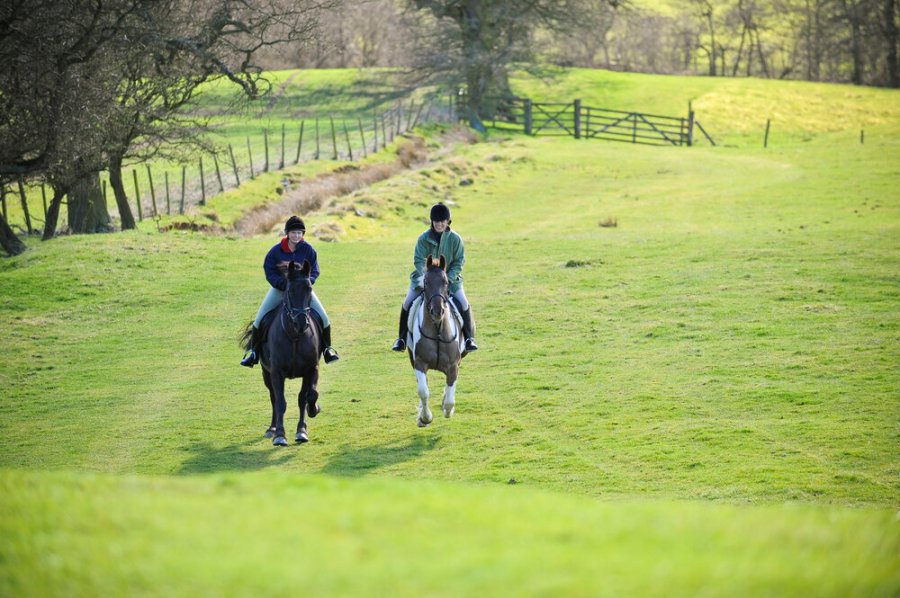Does your horse lose momentum when cantering on a hack? Do you have to push him along, and feel like you’re more out of breath than he is? Claire Lilley, dressage rider and trainer, shares her tips on keeping oomph in your horse’s paces.
Weakness in the back may be one reason why your pony can’t sustain canter. He may also be unbalanced and on his forehand, making it hard going for him.
The way to help is to use frequent walk-canter-walk transitions to help your pony take weight behind, which will strengthen his back and haunches.
It might sound strange, but if he learns to collect properly in this way — even learning collected movements, such as cantering 10m circles — he will go forwards more easily and be more aerodynamic.
Changing from collected canter to working canter to medium canter or a gallop could also help your pony to enjoy fast work more.
TOP TIP
Gridwork over small jumps or cavaletti can also be very useful for strengthening your horse’s back and making him more athletic.
Watch his behaviour
If you think your horse’s lack of stamina could be a health or fitness issue, be mindful of his behaviour.
Horses are prey animals so hide their pain really well. Watch out for any behavioural changes as a sign they may not be coping or are in pain.
Behavioural changes to their work may include resistance to the bridle, changing leads regularly in canter, bucking, rearing or showing signs of discomfort when the saddle is being put on. Some signs may be much more subtle such as tilting their head, clamping their tail, or repeatedly opening their mouth.
If you notice any behavioural changes, the first thought should be to check if your horse is in pain by discussing these signs with your vet. It could be something as simple as your saddle needing a check. Make sure your tack is clean and supple. Make sure all boots, bandages and saddlecloths are also clean and free of grime and sweat. Dirty tack can result in sores and/or rubs.
Basic fitness plan
Be mindful of your horse’s respiration rate i.e. are they blowing? Are they sweating excessively? Know what your horse’s resting respiration and pulse rate are to help you monitor their recovery rates.
Fitness plans for any horse can be broken down into three stages:
Step 1 – SLOW & STEADY: Slow work to prepare muscles, tendons and ligaments
Step 2 – STRENGTH & STAMINA: Improve basic fitness and strength
Step 3 – SCHOOLING & SPEED: Faster work, interval training, jump training, schooling sessions
Continually assess your horse’s recovery times, and how he is feeling. Is he coping with this work? If you need to extend your walking weeks, then do so. Slow work now will lay down the foundations for faster work later and will minimise the risk of injury.
Could you Hack 1000 Miles? Find out more about our fun, free, achievable challenge here.
Don’t miss the latest issue of Your Horse Magazine, jam-packed with training and veterinary advice, horse-care tips and the latest equestrian products, available now.









